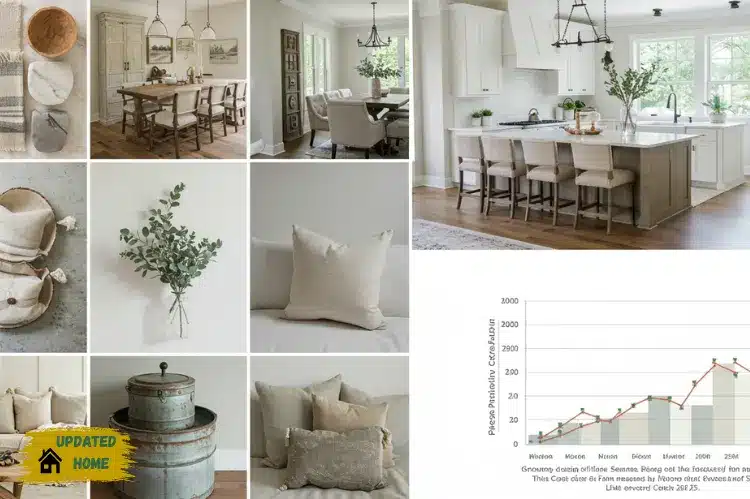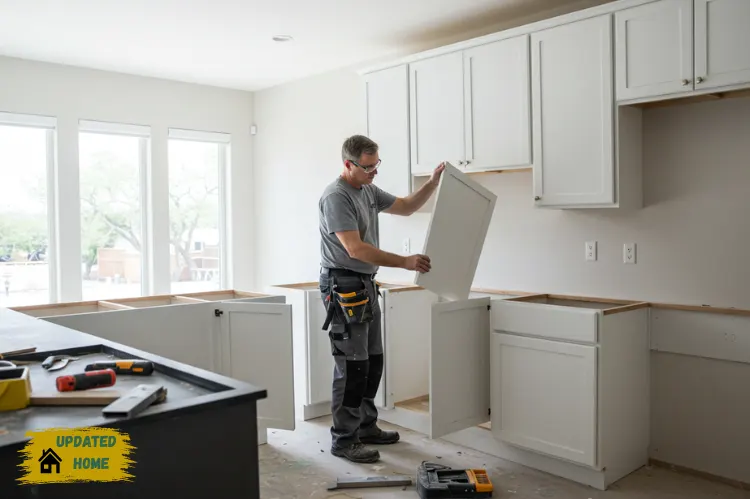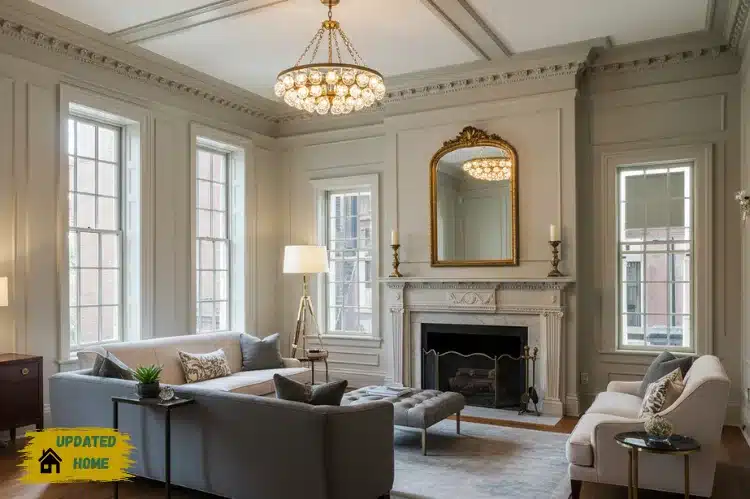Sleeping Dog Properties founder Chris Rapczynski details how hashtag-driven design trends increased luxury project budgets by 40% across Greater Boston’s most exclusive neighborhoods
Boston’s luxury renovation market underwent a seismic shift when social media platforms replaced architectural magazines as the primary sources of design inspiration. Chris Rapczynski, founder and president of Sleeping Dog Properties, witnessed this transformation firsthand during his firm’s 30-year history managing over $500 million in construction projects across Greater Boston.
His award-winning design-build company, recognized with multiple Boston Society of Architects awards and four Best of Houzz awards, must now navigate client expectations shaped by Instagram hashtags rather than professional design consultation.
Recent projects in Newton’s Chestnut Hill and Brookline’s Fisher Hill neighborhoods demonstrate how social media influence drives material selection and cost escalation. Clients arrive at Sleeping Dog Properties’ initial consultations carrying printed screenshots of trending designs rather than seeking professional guidance, which alters how luxury renovations exceeding $750,000 are conceptualized and executed across Boston’s most prestigious addresses.
“Fundamentally, people gleaning design aesthetic from Instagram,” Rapczynski observes about this market shift. “People shop by keywords or hashtags. They find a style they like, modern farmhouse as an example, and they will go grab the elements that they like in different things.”
This phenomenon affects renovation projects throughout Greater Boston’s affluent communities, from Beacon Hill’s Federal-style townhouses to contemporary Seaport District condominiums. Sleeping Dog Properties, named among the top general contractors in Cambridge by General Contractors Magazine, must balance viral design trends with the practical realities of construction in Boston’s complex regulatory environment.
Table of Contents
Material Shortages Drive Construction Costs Higher
Instagram trends create immediate supply chain disruptions that significantly impact project budgets across Boston’s luxury residential market. Rapczynski experienced this phenomenon when Instagram’s modern farmhouse aesthetic triggered unprecedented demand for specific wood species, forcing material costs to increase dramatically within months.
“It’s been problematic because, as an example, from modern farmhouse, everybody likes white rift oak, which now has made a high demand of white rift oak,” Rapczynski explains. “So it’s hard to get, very expensive inside of a time when manufacturing of any wood material is labor intensive and the sawmills and lumber yards are stressed and shipping costs are high.”
White oak flooring, typically priced between $4-7 per square foot, has experienced demand spikes that push premium grades to $12-15 per square foot in Boston’s competitive market. Hashtag-driven design choices create concentrated demand that eliminates pricing advantages traditionally available from diverse material selections.
“If you’re really narrowing your design down to the thing everybody else likes, that’s a cost thing,” Rapczynski notes about the economic implications of following viral design trends. A recent Commonwealth Avenue brownstone renovation initially budgeted at $850,000 expanded to over $1 million when clients insisted on Instagram-trending finishes despite supply constraints and extended lead times.
Sleeping Dog Properties now maintains relationships with seven different material suppliers to navigate shortages affecting projects throughout affluent Greater Boston communities, including Dover, Wellesley, and Lexington. The firm’s experience demonstrates how social media influence extends beyond aesthetics to create tangible economic impacts on luxury construction budgets.
Appliance Shortages Force Kitchen Design Compromises
Kitchen renovations demonstrate particular vulnerability to Instagram’s influence throughout Boston’s high-end residential market. Professional-grade appliances gain prominence partly through their photogenic qualities and frequent appearance in social media kitchen reveals, creating supply chain bottlenecks that extend project timelines from four months to seven months.
“The emphasis on appliances has been high because they’ve been in such high demand,” Rapczynski explains about this market dynamic. Manufacturing delays force clients to explore alternatives that often create different aesthetic outcomes than originally planned.
Recent Back Bay projects required complete color scheme revisions when specified stainless steel appliances, like a Wolf range, proved unavailable. Clients accept design compromises, selecting alternative brands like Bertazzoni or Cornue that offer different visual profiles than their original Instagram inspiration.
These supply disruptions particularly impact Boston’s most desirable addresses, from Louisburg Square to Cambridge’s Brattle Street, where homeowners expect Instagram-worthy results within traditional renovation budgets and schedules.
Sleeping Dog Properties adapted by presenting three appliance alternatives for every specification, preventing construction delays while maintaining design flexibility. This approach reflects broader industry adjustments to social media-driven demand patterns that can overwhelm traditional supply chains.
Formal Living Rooms Disappear from Boston Homes
Instagram has accelerated fundamental changes in how Boston homeowners conceive residential space utilization. Rapczynski observes the elimination of formal rooms across affluent neighborhoods including Andover, Newton, and Wellesley, where clients increasingly prioritize multi-functional spaces that serve daily activities while maintaining visual appeal for social media documentation.
“People are trying to use every inch of the house, whereas maybe before they might not have used rooms,” Rapczynski explains about this spatial transformation. “That living room, I used to call it a furniture museum, where everybody put their old furniture. This is when somebody comes in, we’re going to go sit in this room for a little bit, which then gets skipped and they all go right to the kitchen.”
Contemporary homeowners want spaces that photograph effectively while serving practical functions, reflecting broader lifestyle changes influenced by social media culture. “Now people think of that room a little differently and it becomes play space for the kids or entertainment room or a maker’s space for crafts,” Rapczynski notes about traditional formal space transformations.
Converting formal living rooms into multifunctional spaces requires extensive electrical upgrades, enhanced HVAC systems, and structural modifications that add $25,000-$ 40,000 to renovation budgets. Recent projects demonstrate client willingness to absorb these costs to create Instagram-worthy spaces that support both daily functionality and social media aesthetics.
A $1.2 million Wellesley renovation transformed a formal living room into a children’s craft studio, featuring built-in storage systems designed with visual appeal in mind for social media sharing. Such conversions create construction challenges for contractors working throughout Boston’s historic neighborhoods, where modifications must comply with preservation requirements while meeting contemporary lifestyle expectations.
Historic Preservation Meets Social Media Expectations
Boston’s historic districts face distinctive obstacles when clients demand Instagram-trending features that conflict with preservation requirements enforced by the Boston Landmarks Commission. Rapczynski must navigate regulatory compliance while satisfying homeowners who expect contemporary aesthetics in centuries-old properties throughout Beacon Hill, the South End, and Back Bay.
Recent projects have revealed innovative solutions that satisfy both preservation authorities and client expectations influenced by Instagram. LED lighting systems achieve optimal illumination for social media photography while concealing modern technology within period-appropriate fixtures.
Smart home integration requires extensive coordination between electrical, networking, and security systems during construction, particularly challenging when working within historic property constraints.
Construction complexities intensify when social media inspiration conflicts with structural realities of 18th- and 19th-century properties. Converting Victorian-era formal rooms into open-concept spaces demands structural engineering expertise that maintains architectural integrity while accommodating modern living patterns popularized through social media platforms.
Economic Impact Across Client Sectors
Social media influence affects different client demographics within Boston’s luxury market in varying ways. Rapczynski’s diverse clientele spans multiple industries, each responding differently to Instagram-driven cost increases and timeline extensions.
“Different sectors are impacted differently,” Rapczynski observes about his client base. “The medical industry is different, or bio-pharma is different. They have unlimited money in those businesses.” This economic reality allows some clients to pursue Instagram aesthetics regardless of material costs, supply chain disruptions, or preservation complexities.
However, not all clients embrace social media influence. Recent projects have included homeowners who explicitly request designs that avoid Instagram trends, often resulting in more distinctive outcomes that receive recognition in traditional design publications. Such contrarian approaches frequently produce more enduring results that avoid the homogenization characterizing many social media-inspired renovations.
Industry Adaptation and Future Implications
Rapczynski’s firm has fundamentally altered client consultation processes to accommodate Instagram-driven expectations. Where traditional renovations began with architectural drawings and professional material recommendations, contemporary projects start with hashtag research and digital mood board analysis.
Instagram has permanently altered renovation economics, supply chain management, and project timelines across Boston’s affluent residential market. Experienced contractors who understand both social media influence and traditional construction practices maintain competitive advantages in serving clients who seek Instagram-worthy results while appreciating authentic craftsmanship that transcends viral design trends.
Boston’s construction industry continues to adapt to visual-first design processes, but firms like Sleeping Dog Properties, which combine three decades of local market expertise with award-winning design capabilities, remain well-positioned to navigate social media influence while delivering exceptional results that satisfy both contemporary expectations and historic preservation requirements.
Read Next: Luxury Residential Architecture Firms: Benefits of Luxury Home




